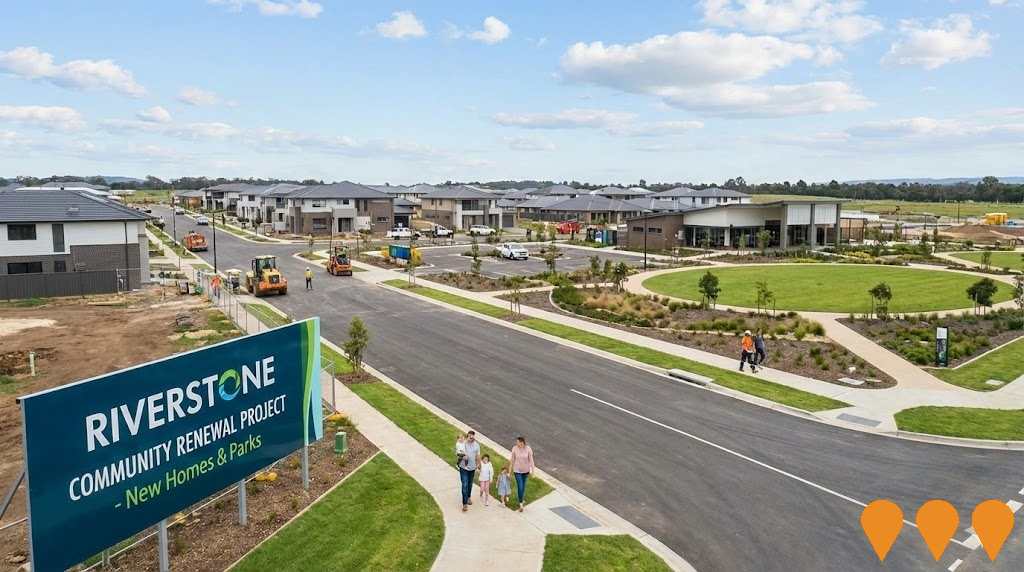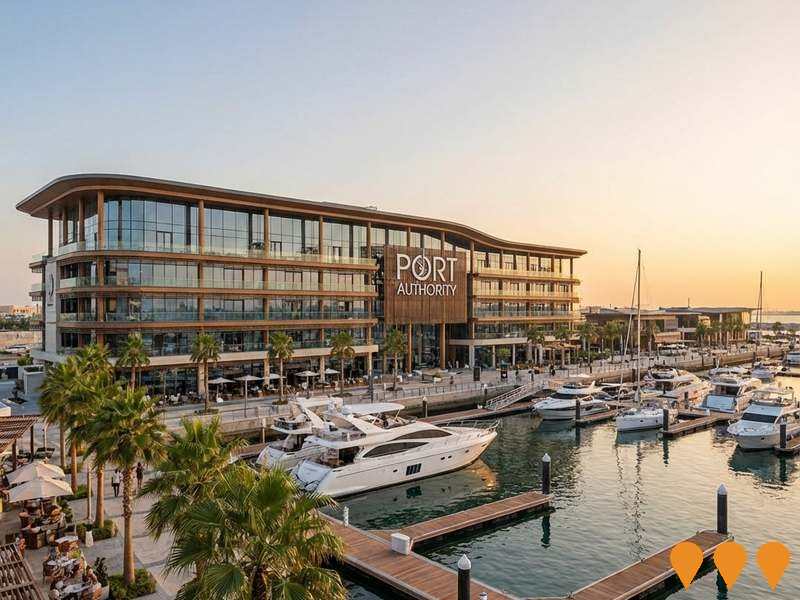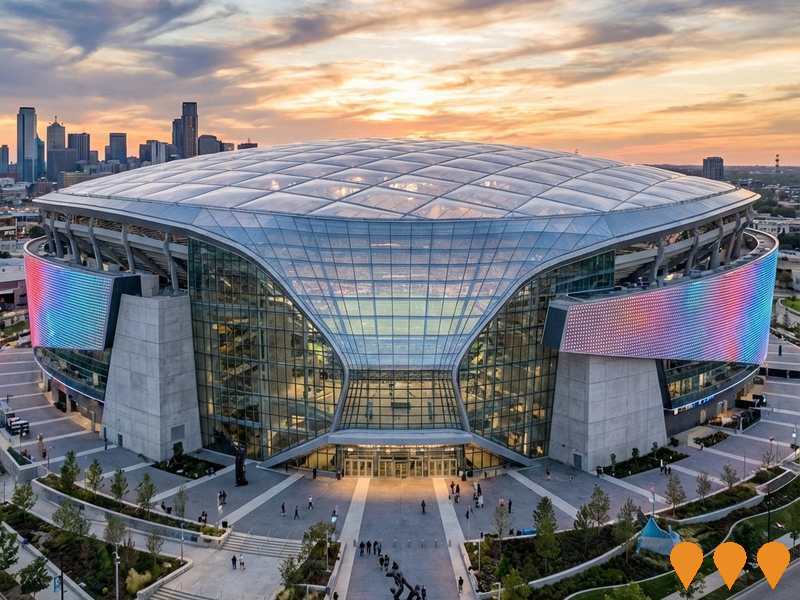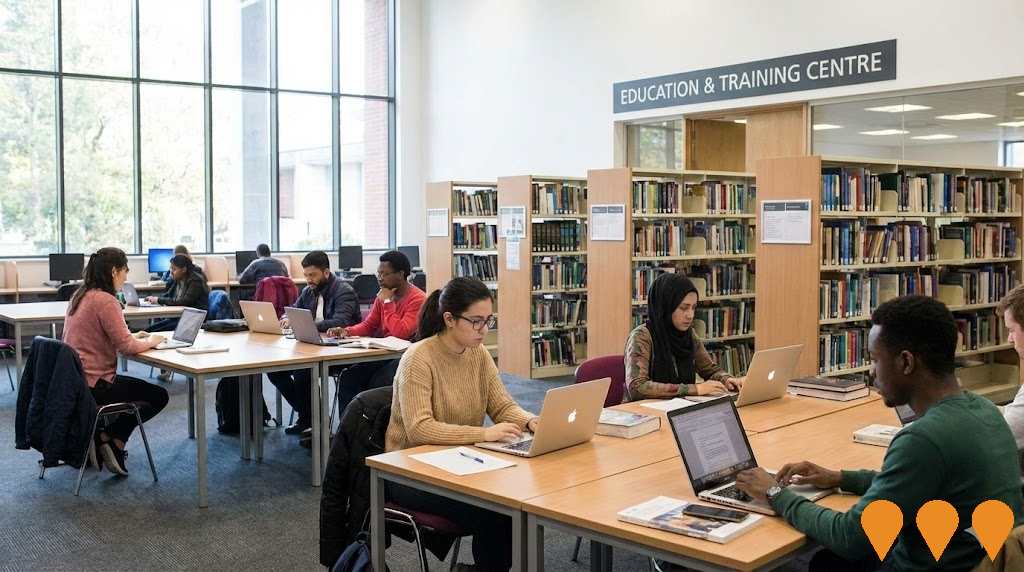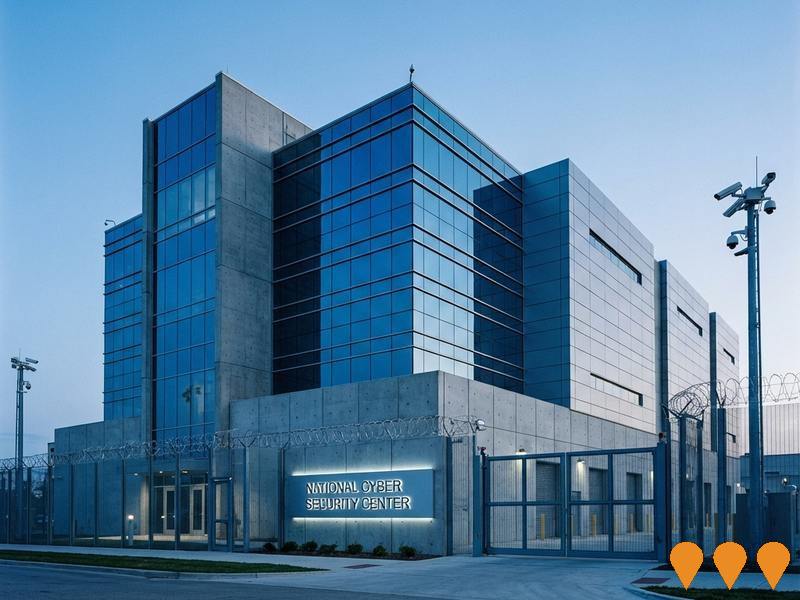Chart Color Schemes
est. as @ -- *
ABS ERP | -- people | --
2021 Census | -- people
Sales Activity
Curious about local property values? Filter the chart to assess the volume and appreciation (including resales) trends and regional comparisons, or scroll to the map below view this information at an individual property level.
Find a Recent Sale
Sales Detail
Population
Lara lies within the top 10% of areas nationally in terms of population growth performance according to AreaSearch analysis of short and medium-term trends
Lara's population is approximately 24,188 as of August 2025. This reflects an increase of 3,371 people since the 2021 Census, which reported a population of 20,817. The change is inferred from the estimated resident population of 22,982 in June 2024 and an additional 1,668 validated new addresses since the Census date. This results in a population density of 41 persons per square kilometer. Lara's growth rate of 16.2% since the 2021 census exceeded the non-metro area (5.5%). Population growth was primarily driven by interstate migration, contributing approximately 54.6% of overall population gains.
AreaSearch is adopting ABS/Geoscience Australia projections released in 2024 with a base year of 2022 for each SA2 area. For areas not covered, AreaSearch uses the VIC State Government's Regional/LGA projections released in 2023, adjusted using weighted aggregation from LGA to SA2 levels. Growth rates by age group are applied across all areas for years 2032 to 2041. Future population dynamics predict exceptional growth, placing Lara in the top 10 percent of national regional areas. By 2041, the area is expected to increase by 11,293 persons, recording a gain of 41.7% over the 17 years.
Frequently Asked Questions - Population
Development
The level of residential development activity in Lara was found to be higher than 90% of real estate markets across the country
Lara has received approximately 428 dwelling approvals annually. Over the past five financial years, from FY-21 to FY-25, around 2,143 homes have been approved, with an additional 154 approved in FY-26 so far. On average, 1.2 new residents per year have arrived for each new home over these five years, indicating a balanced supply and demand market that supports stable conditions.
The average construction cost value of new homes is $376,000, which is lower than regional levels, suggesting more affordable housing options for buyers. This financial year has seen $1,009.5 million in commercial approvals registered, reflecting strong local business investment. Compared to the rest of Victoria, Lara records 92.0% more development activity per capita, indicating significant developer interest in the area and greater choice for buyers. Recent construction comprises 96.0% standalone homes and 4.0% medium and high-density housing, maintaining the area's traditional low-density character with a focus on family homes. With around 54 people per dwelling approval, Lara exhibits characteristics of a growth area.
Population forecasts project Lara will gain approximately 10,077 residents by 2041. Given current development patterns, new housing supply should meet demand, offering favourable conditions for buyers and potentially facilitating population growth beyond current projections.
Frequently Asked Questions - Development
Infrastructure
Lara has emerging levels of nearby infrastructure activity, ranking in the 34thth percentile nationally
Changes in local infrastructure significantly affect an area's performance. AreaSearch identified 60 projects potentially impacting the region. Notable ones are Parkview Lara Estate, Austin Lara Master Planned Community, Lara Lakes Estate, Ingenia Lifestyle Lakeside Lara. The following details projects deemed most relevant.
Professional plan users can use the search below to filter and access additional projects.
INFRASTRUCTURE SEARCH
 Denotes AI-based impression for illustrative purposes only, not to be taken as definitive under any circumstances. Please follow links and conduct other investigations from the project's source for actual imagery. Developers and project owners wishing us to use original imagery please Contact Us and we will do so.
Denotes AI-based impression for illustrative purposes only, not to be taken as definitive under any circumstances. Please follow links and conduct other investigations from the project's source for actual imagery. Developers and project owners wishing us to use original imagery please Contact Us and we will do so.
Frequently Asked Questions - Infrastructure
Lara West Precinct Structure Plan
390-hectare urban growth precinct west of Lara, planned for approximately 6,000 new homes and 11,600 residents over 30+ years. Includes multiple residential communities (Coridale by Villawood Properties, Lara Lakes by Bisinella Developments), two future government schools, community facilities, sporting reserves, local town centre, employment land and extensive parklands. Development is actively underway with multiple stages under construction in 2025.
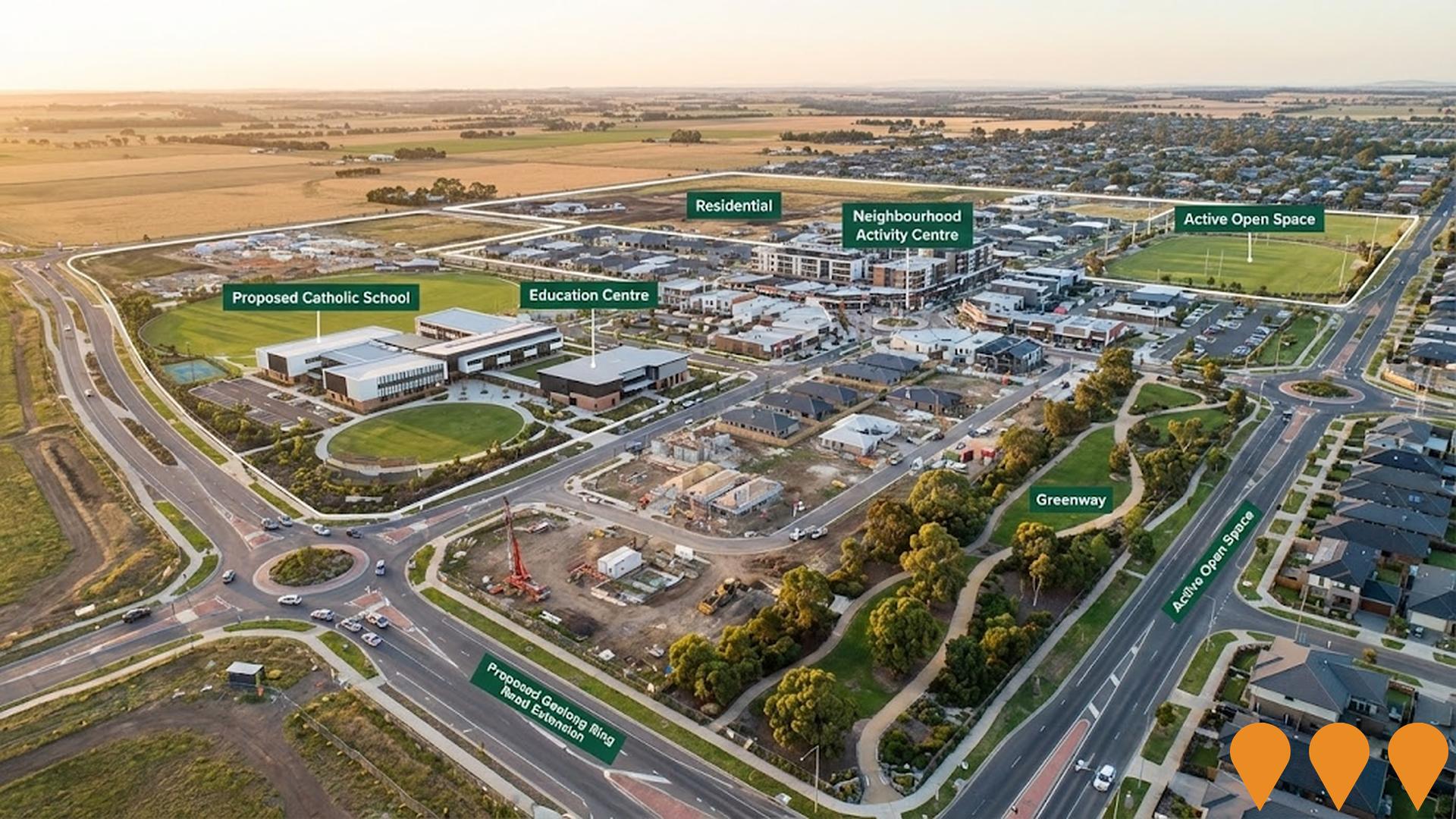
Northern and Western Geelong Growth Areas
The largest greenfield urban growth project in regional Victoria, the Northern and Western Geelong Growth Areas span approximately 5,300-5,500 hectares and are planned to accommodate more than 110,000 new residents (around 40,000 dwellings) across multiple precincts. Key precincts include Creamery Road, Elcho Road East, Elcho Road West, and Batesford North. Precinct Structure Plans (PSPs), Development Contributions Plans, and strategic environmental assessments are in preparation, with a Standing Advisory Committee established in 2023. The project involves the Victorian Planning Authority and City of Greater Geelong, with federal environmental approvals underway.
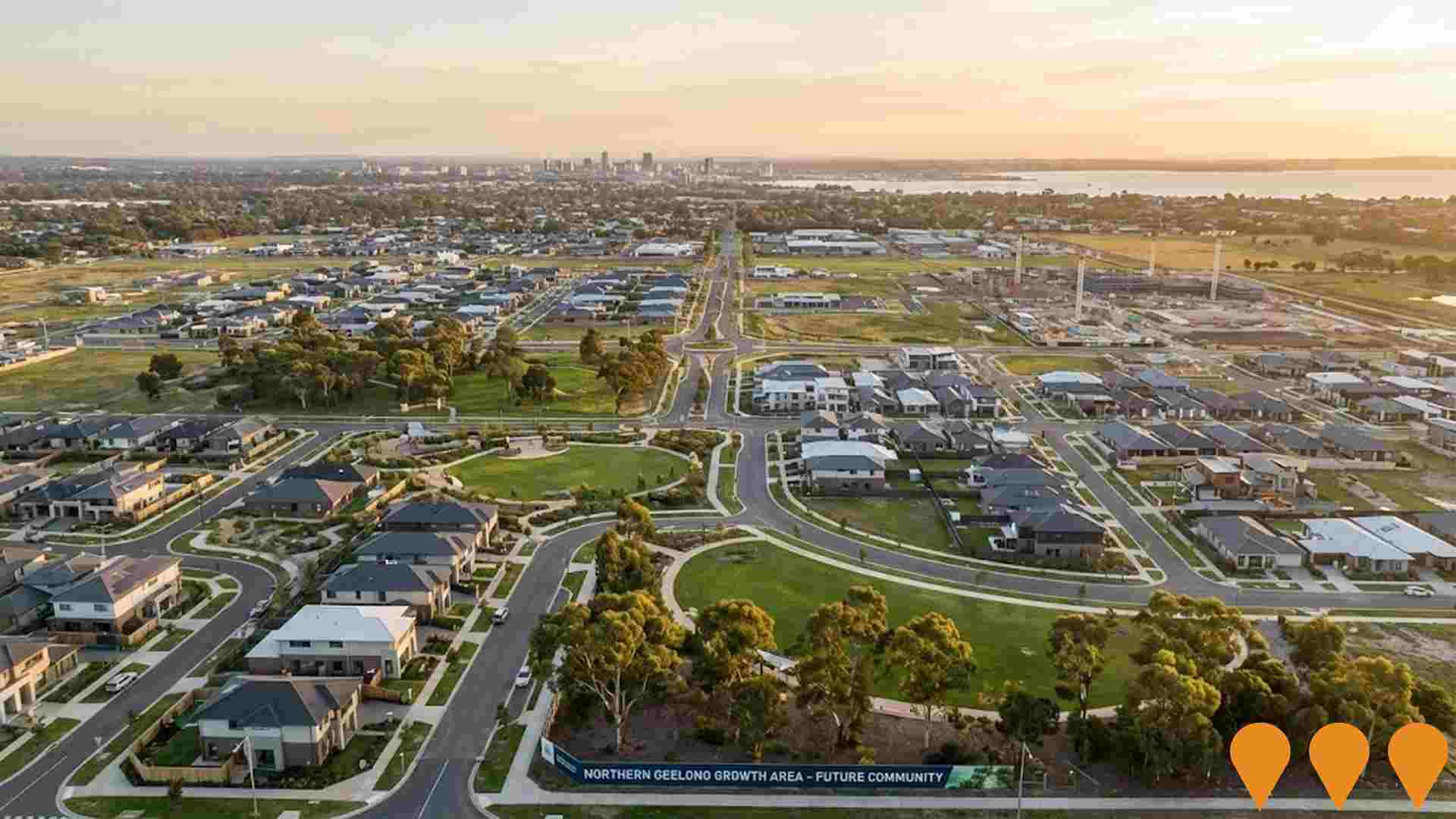
Prospect Hill Energy from Waste Facility
A state-of-the-art energy from waste plant that will convert 400,000 tonnes of residual waste into 35 MW of electricity annually, enough to power up to 50,000 homes. The facility will divert waste from landfill and contribute to Victoria's energy security. The project has received EPA development licence approval in December 2023 and is currently in the detailed design phase, though facing community opposition and VCAT appeals.
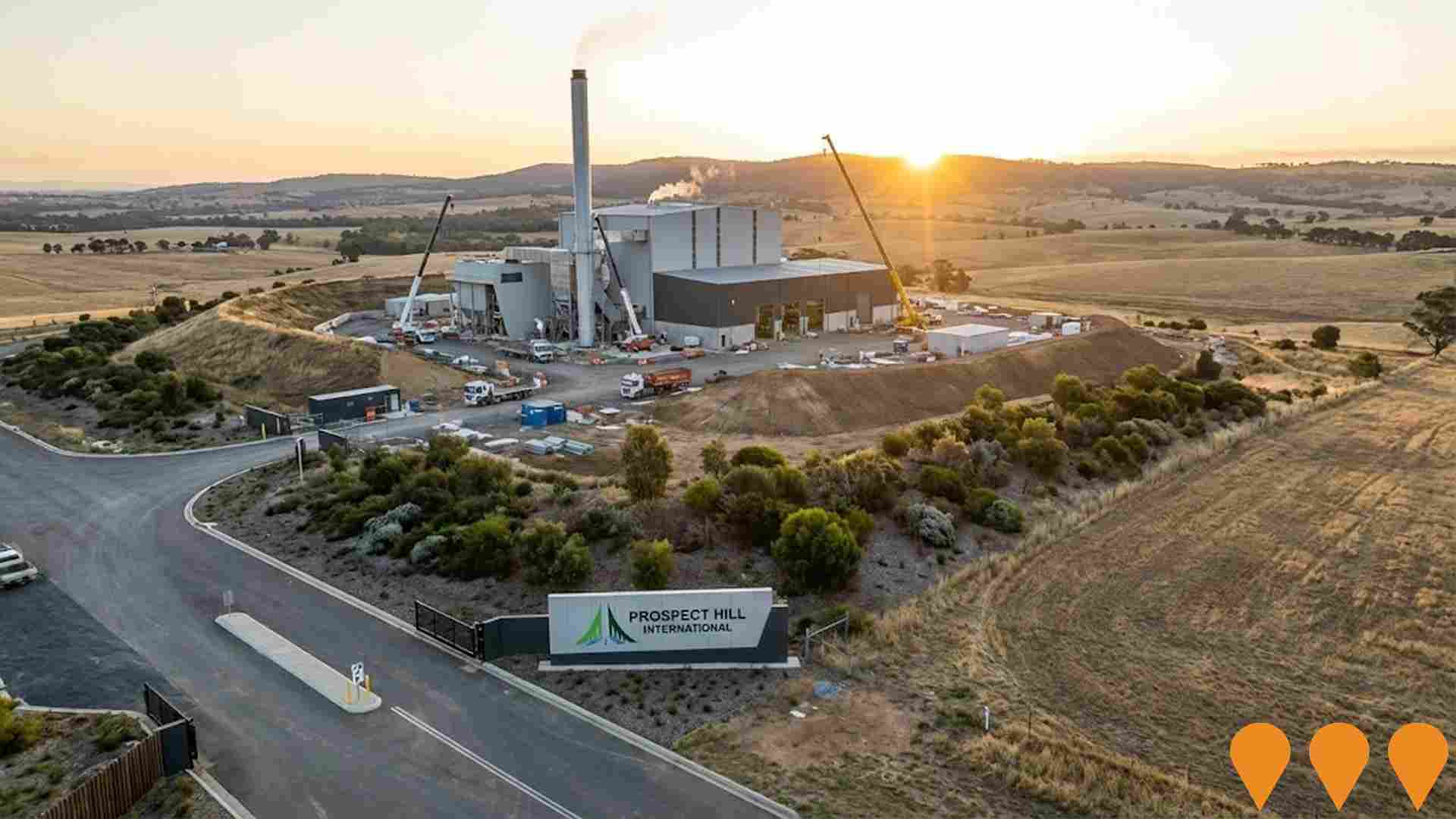
Norlane ARC (Northern Aquatic and Community Hub)
State-of-the-art $65.6 million aquatic and community facility featuring 25m indoor pool, hydrotherapy pool, learn to swim pool, water play area, waterslide, 1000sqm multi-purpose community space, spa, sauna, steam room, gymnasium, and extensive landscaped outdoor areas. Replaces former Waterworld and Centenary Hall facilities.
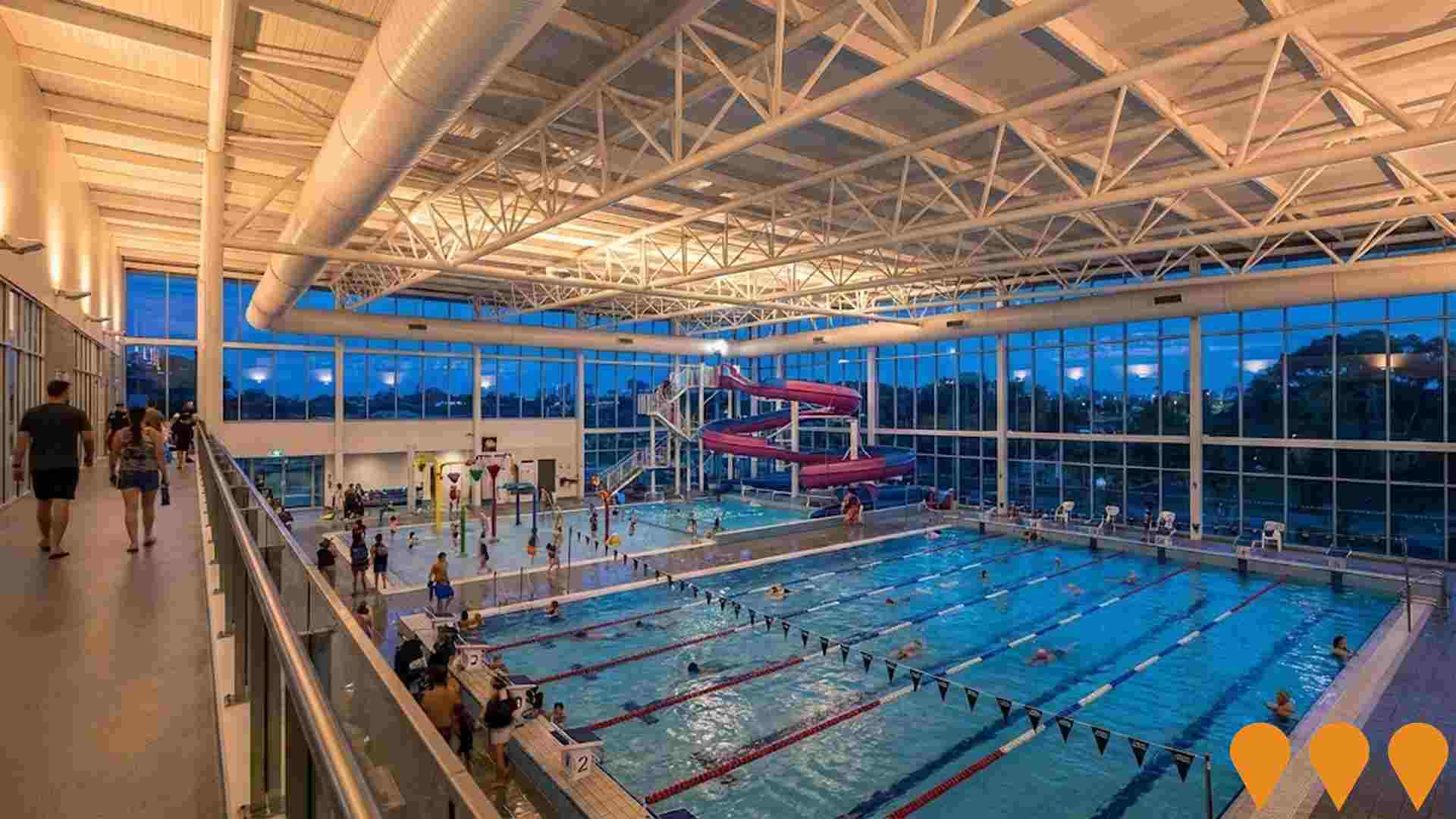
MAB Greater Avalon Business Park
A proposed 780-hectare industrial and business precinct alongside Avalon Airport focused on large-scale manufacturing, transport and logistics, wholesale trade, energy and airport-related uses. Developer guidance indicates planning approvals and stage 1 works target initial operations in 2028, with an estimated investment of about $3.3 billion and 18,000+ jobs.
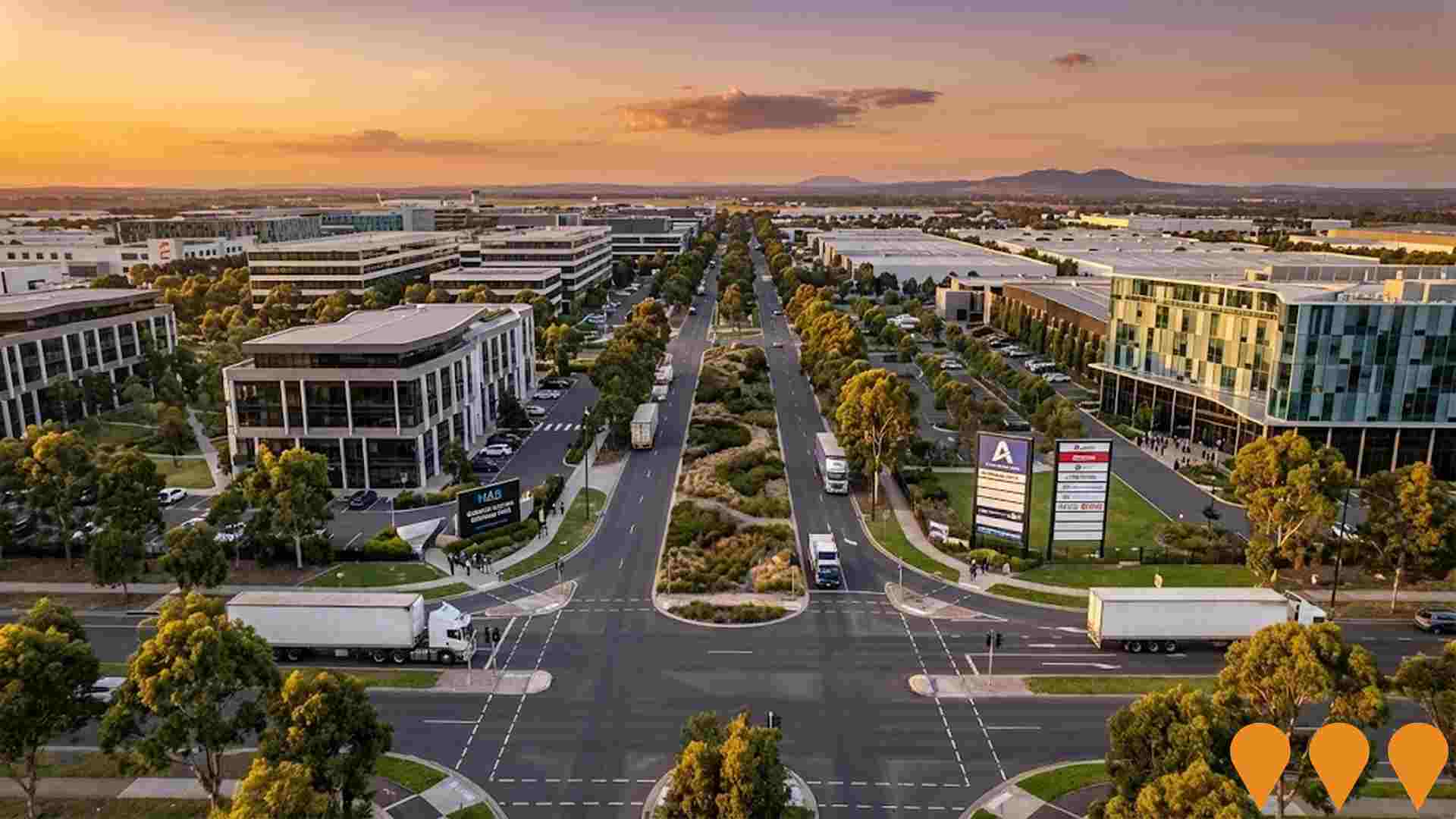
Austin Lara Master Planned Community
A vibrant new master-planned community in West Lara featuring over 1,000+ residential lots across multiple stages. Combining natural features such as open parkland and waterways with wide tree-lined streets. First titles issued late 2020/early 2021 with ongoing construction across Stages 1-15+. Developed by Austin Land with project management by PPM Group.
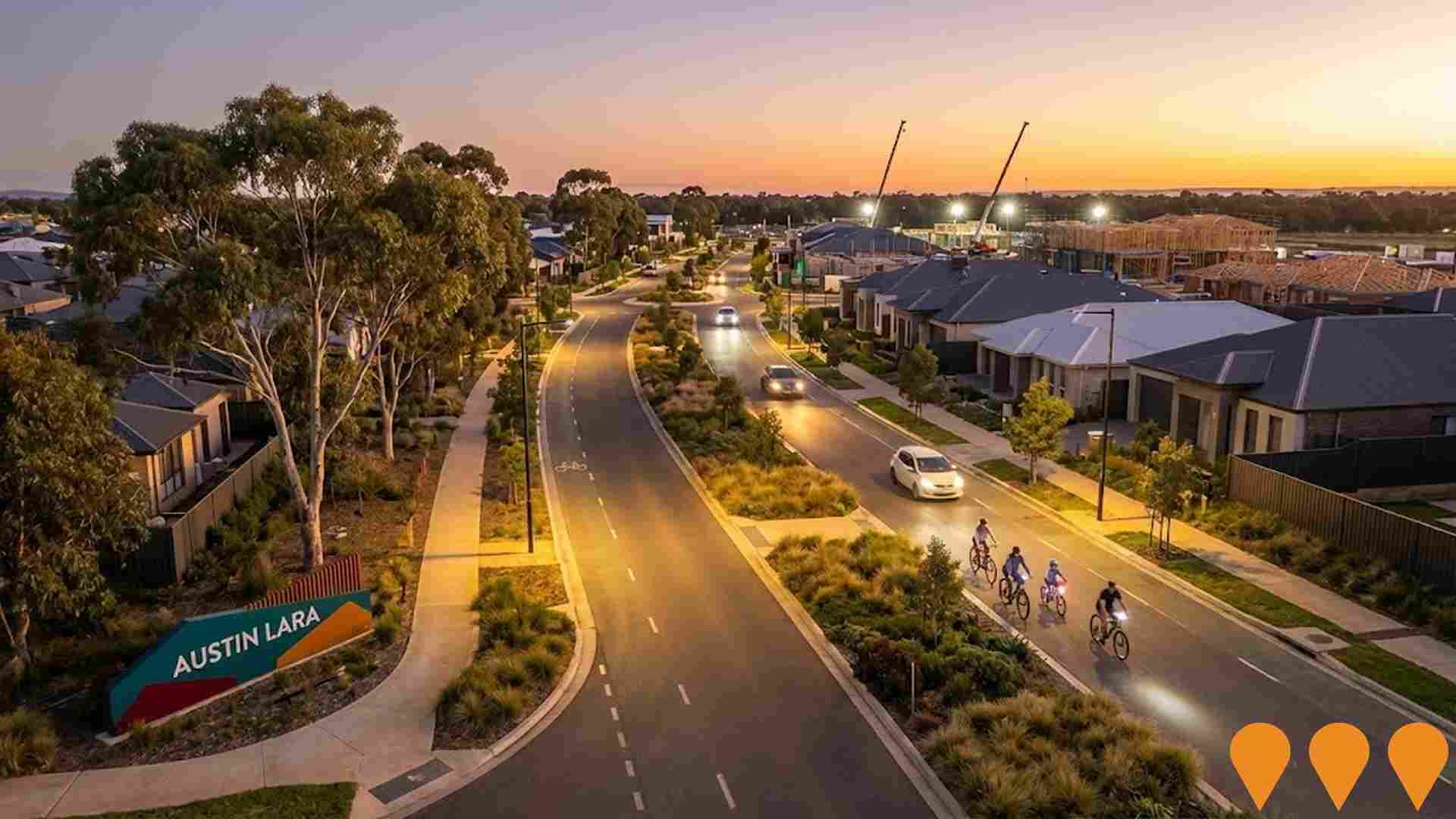
Parkview Lara Estate
A master-planned residential estate offering titled lots across 9 stages, featuring 500 approved residential lots on 80 hectares in Lara West. The development includes parks, playgrounds, waterways, and picturesque views to the You Yangs Ranges. Stage 4 is currently launching with lots ranging from 238-344 sqm. Part of the broader Lara West Precinct Structure Plan supporting 11,000 residents and $37 million in infrastructure investment.

Lara Six Ways Intersection Upgrade
Major intersection upgrade to improve traffic flow and safety at the Lara Six Ways intersection. The project includes new traffic signals, road widening, and improved pedestrian and cycling facilities.

Employment
Employment conditions in Lara remain below the national average according to AreaSearch analysis
Lara's workforce comprises skilled individuals with notable representation in essential services sectors. The unemployment rate stands at 3.7%, reflecting an estimated employment growth of 1.9% over the past year, as of June 2025.
In this month, 11,428 residents are employed while the unemployment rate is 0.1% lower than Rest of Vic.'s rate of 3.8%. Workforce participation in Lara is at 61.7%, slightly higher than Rest of Vic.'s 57.4%. Employment concentrations include health care & social assistance, construction, and retail trade. Notably, transport, postal & warehousing shows a high concentration with employment levels at 1.8 times the regional average.
Conversely, agriculture, forestry & fishing employs just 2.0% of local workers, below Rest of Vic.'s 7.5%. The area appears to offer limited local employment opportunities, as indicated by Census data comparing working population and resident population. Between June 2024 and June 2025, employment levels increased by 1.9%, labour force rose by 2.3%, causing the unemployment rate to rise by 0.4 percentage points. By comparison, Rest of Vic. saw an employment decline of 0.9% and a labour force decline of 0.4%, with unemployment rising by 0.4 percentage points. Jobs and Skills Australia's national employment forecasts from May 2025 project national employment growth at 6.6% over five years and 13.7% over ten years, but growth rates vary significantly between industry sectors. Applying these projections to Lara's employment mix suggests local growth of approximately 6.2% over five years and 12.9% over ten years, based on a simple weighting extrapolation for illustrative purposes.
Frequently Asked Questions - Employment
Income
Income analysis reveals strong economic positioning, with the area outperforming 60% of locations assessed nationally by AreaSearch
According to AreaSearch's aggregation of latest postcode level ATO data released for financial year 2022, Lara had a median income among taxpayers of $56,326. The average income stood at $66,823. This was slightly above the national average and compared to levels of $48,741 and $60,693 across Rest of Vic. respectively. Based on Wage Price Index growth of 12.16% since financial year 2022, current estimates for Lara would be approximately $63,175 (median) and $74,949 (average) as of September 2025. Census data reveals household, family and personal incomes in Lara cluster around the 59th percentile nationally. Income analysis shows that the $1,500 - 2,999 bracket dominates with 37.1% of residents (8,973 people). After housing, 86.5% of income remains for other expenses and the area's SEIFA income ranking places it in the 5th decile.
Frequently Asked Questions - Income
Housing
Lara is characterized by a predominantly suburban housing profile, with ownership patterns similar to the broader region
In Lara, as per the latest Census evaluation, 90.4% of dwellings were houses, with the remaining 9.6% comprising semi-detached homes, apartments, and other types. This distribution differs from Non-Metro Vic., where 84.6% of dwellings are houses and 15.4% are other dwellings. Home ownership in Lara stood at 32.5%, mirroring the Non-Metro Vic. rate, with mortgaged properties at 46.4% and rented dwellings at 21.2%. The median monthly mortgage repayment in Lara was $1,755, higher than Non-Metro Vic.'s average of $1,712. The median weekly rent in Lara was $370, compared to Non-Metro Vic.'s $335. Nationally, Lara's median monthly mortgage repayments were lower at $1,755 versus Australia's average of $1,863, and median weekly rents were also lower at $370 compared to the national figure of $375.
Frequently Asked Questions - Housing
Household Composition
Lara features high concentrations of family households, with a higher-than-average median household size
Family households comprise 77.2% of all households, including 37.7% couples with children, 27.5% couples without children, and 11.0% single parent families. Non-family households account for the remaining 22.8%, with lone person households at 20.6% and group households comprising 2.2%. The median household size is 2.7 people, larger than the Rest of Vic. average of 2.4.
Frequently Asked Questions - Households
Local Schools & Education
Educational attainment in Lara aligns closely with national averages, showing typical qualification patterns and performance metrics
The area's university qualification rate is 19.6%, significantly lower than Victoria's average of 33.4%. Bachelor degrees are the most common at 13.6%, followed by postgraduate qualifications (3.5%) and graduate diplomas (2.5%). Vocational credentials are prevalent, with 37.5% of residents aged 15+ holding them, including advanced diplomas (11.5%) and certificates (26.0%). Educational participation is high at 32.7%, comprising primary education (12.1%), secondary education (9.0%), and tertiary education (4.1%).
Seven schools operate in Lara, educating approximately 2,410 students, with typical Australian school conditions (ICSEA: 1002) and balanced educational opportunities. The educational mix includes four primary, one secondary, and two K-12 schools. School places per 100 residents are lower than the regional average at 10.0, indicating some students may attend schools in adjacent areas. Note that where school enrolments show 'n/a', please refer to the parent campus.
Frequently Asked Questions - Education
Schools Detail
Nearby Services & Amenities
Transport
Transport servicing is low compared to other areas nationally based on assessment of service frequency, route connectivity and accessibility
Transport analysis in Lara shows 70 active public transport stops. These include a mix of train and bus services. There are 9 individual routes operating, providing a total of 2,285 weekly passenger trips.
Transport accessibility is rated as limited, with residents typically located 709 meters from the nearest stop. Service frequency averages 326 trips per day across all routes, equating to approximately 32 weekly trips per stop.
Frequently Asked Questions - Transport
Transport Stops Detail
Health
Health performance in Lara is lower than average with common health conditions somewhat prevalent across the board, though to a slightly higher degree among older age cohorts
Lara's health profile shows significant challenges with common conditions that are prevalent across age groups, particularly among older cohorts.
Private health cover stands at approximately 52%, slightly higher than the average SA2 area (~12,674 people). The most frequent medical issues are mental health concerns and asthma, affecting 9.3% and 9.2% of residents respectively. Conversely, 66.6% report no medical ailments, compared to 65.9% in Rest of Vic.. The area has 14.0% of residents aged 65 and over (3,383 people), lower than the 16.8% in Rest of Vic.. However, health outcomes among seniors require more attention.
Frequently Asked Questions - Health
Cultural Diversity
In terms of cultural diversity, Lara records figures broadly comparable to the national average, as found in AreaSearch's assessment of a number of language and cultural background related metrics
Lara's cultural diversity aligns with the broader regional average, with 85.4% citizens, 82.2% born in Australia, and 88.2% speaking English only at home. Christianity is prevalent, comprising 47.7%. Notably, 'Other' religion represents 1.6%, slightly higher than the Rest of Vic's 1.2%.
Top ancestral groups are English (28.0%), Australian (27.9%), and Irish (8.4%). Dutch (2.2%) and Croatian (1.2%) ancestry is overrepresented compared to regional averages of 2.0% and 1.5%, respectively, while Maltese stands at 1.3%, higher than the region's 0.5%.
Frequently Asked Questions - Diversity
Age
Lara's population is slightly younger than the national pattern
The median age in Lara is 36 years, which is significantly lower than Rest of Vic.'s average of 43 years and somewhat younger than Australia's median age of 38 years. The 25-34 age group constitutes 15.8% of Lara's population, higher than Rest of Vic., while the 65-74 cohort makes up 7.8%. Post-2021 Census data shows that the 35 to 44 age group has grown from 14.9% to 16.3%, and the 45 to 54 cohort has declined from 13.5% to 12.2%, with the 65 to 74 group dropping from 9.1% to 7.8%. Population forecasts for Lara indicate substantial demographic changes by 2041, with the 25 to 34 age group expected to grow by 62%, reaching 6,180 people from the current 3,826.
